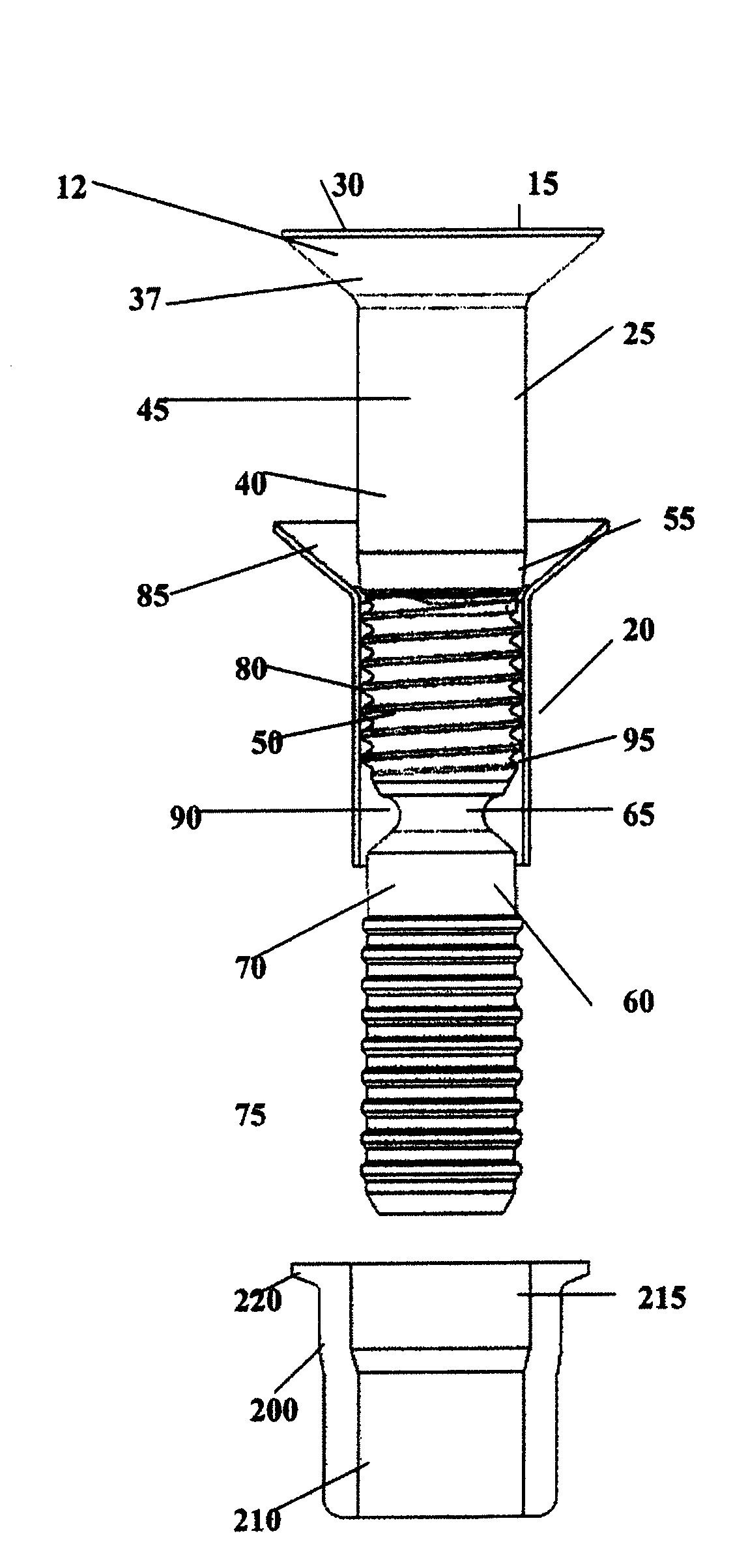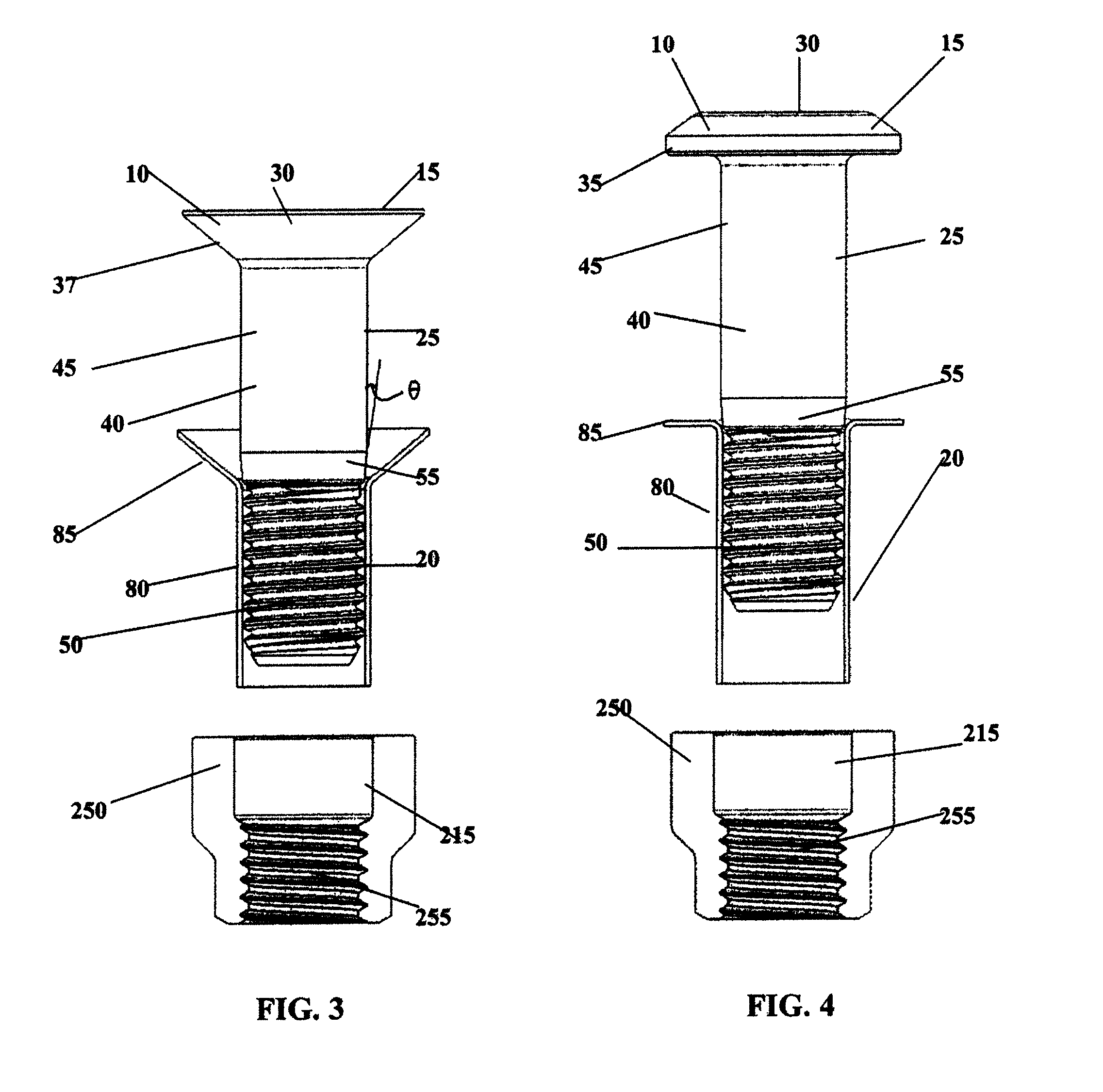High performance sleeved interference fasteners for composite applications
a composite application, high-performance technology, applied in the direction of threaded fasteners, screws, bolts, etc., can solve the problems of unsafe use of fasteners, new challenges to overcome in fastening technology, and inability to safely install existing aerospace fasteners in interference conditions in graphite or mixed graphite-composite metallic structures, etc., to achieve the effect of reducing friction
- Summary
- Abstract
- Description
- Claims
- Application Information
AI Technical Summary
Benefits of technology
Problems solved by technology
Method used
Image
Examples
Embodiment Construction
[0037]A fastener for securing together a plurality of workpieces 105, 110 and adapted to be located in aligned holes 125, 130 in such workpieces is disclosed. In exemplary embodiments, the fastener 10 includes a pin member 15, a sleeve member 20 and a collar 200. In other embodiments, the fastener may include a nut instead of a collar. In exemplary embodiments, the workpieces 105, 110 can be formed with a plurality of materials, the materials including composite, metallic, or composite / metallic structures, or any combination thereof. In particular embodiments, the workpieces 105, 110 may be constructed from titanium, aluminum, graphite composites, or any combination thereof.
[0038]An embodiment of the pin and sleeve assembly 12 is shown in FIGS. 1 and 2. The pin member 15 includes an elongated shank portion 40 which terminates at one end 30 with an enlarged flush head 37 or protruding head 35. The pin shank portion 40 includes a substantially smooth cylindrical portion 45, a threaded...
PUM
 Login to View More
Login to View More Abstract
Description
Claims
Application Information
 Login to View More
Login to View More - R&D
- Intellectual Property
- Life Sciences
- Materials
- Tech Scout
- Unparalleled Data Quality
- Higher Quality Content
- 60% Fewer Hallucinations
Browse by: Latest US Patents, China's latest patents, Technical Efficacy Thesaurus, Application Domain, Technology Topic, Popular Technical Reports.
© 2025 PatSnap. All rights reserved.Legal|Privacy policy|Modern Slavery Act Transparency Statement|Sitemap|About US| Contact US: help@patsnap.com



